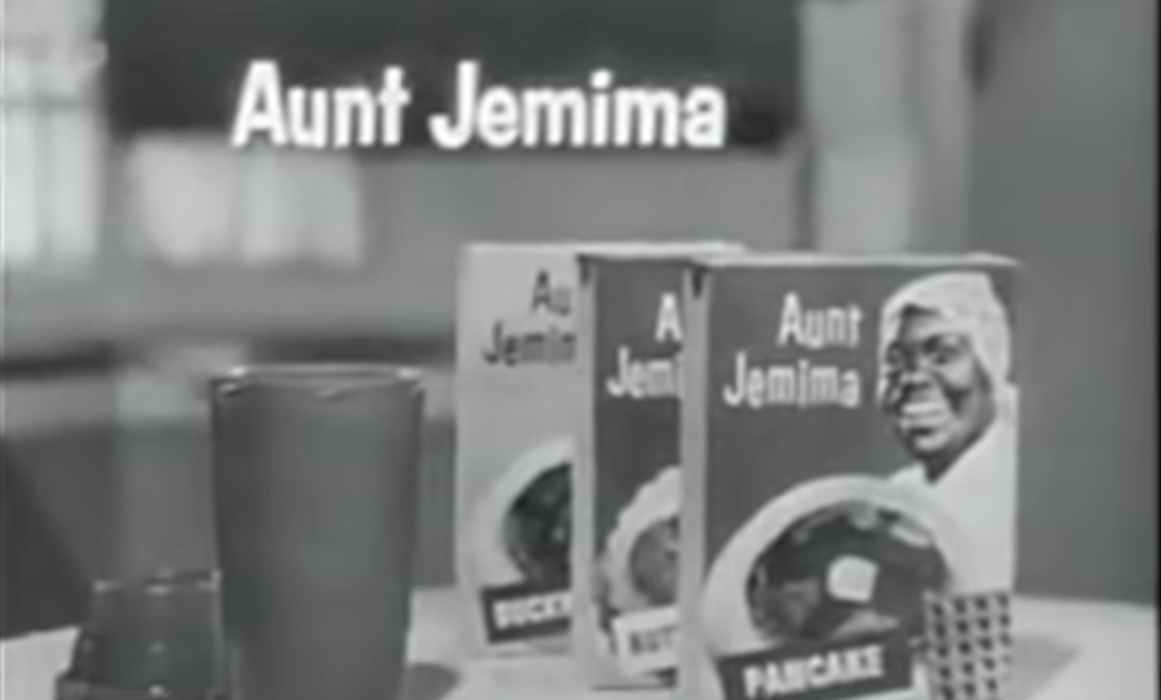Over the past several decades, anything connected with the Confederacy, as well as much of Southern culture and heritage, have all been transformed from objects of American pride into nothing more than racist pariahs that must be blown away by the winds of woke social change and cancel culture.
A prime example of such objects is Georgia-born writer Margaret Mitchell’s 1936 world famous novel, the classic “Gone With the Wind.” Mitchell knew well the period of which she wrote, as she was born in 1900, only two decade after the the Reconstruction Period, as the member of a wealthy Atlanta family, and her grandfather, Russell Mitchell, had served in General Hood’s Texas Brigade in the War of Secession. He was severely wounded during the 1862 Battle of Sharpsburg, spent the rest of the War as an Army nurse in Atlanta and, as the protagonists in “Gone With the Wind” did after the conflict, opened a large lumber business in Atlanta that helped to rebuild the city.
Mitchell’s book became one of most widely read works in the world, was translated into more than forty languages in almost fifty countries and sold well over thirty million copies. “Gone With the Wind” won both the National Book Award and the Pulitzer Prize, and its 1939 screen version won ten Academy Awards . . . including the first ever given to a black actress, Hattie McDaniel, who played the vital role of “Mammy.” Due to current social pressure, Mitchell’s classic work has now been either removed from the shelves of many libraries or relocated to a restricted reading area, while many theaters have refused to show the film version and HBO has taken it off its TV list of movies.
However, the book, which has been reprinted over a hundred times, has once again been redone by its initial 1936 publisher, Macmillan. Even that company though has caved in to the pressure of protest, and has added a lengthy contextualizing caveat by a controversial British fiction/history writer, Philippa Gregory, who warns its readers that Mitchell’s book “effectively promoted the racist planter view of the history of the South.” She also wrote that the book “defends racism, glamorises [sic] and preaches white supremacy and tells us unequivocally that African people are not of the same species as white people.” Gregory closed by saying that “this is the lie that spoils the book.”
There are also a number of well-loved black images that became icons of American culture, but have also been relegated to the trash bin of unwanted American cultural history. Examples of such erasures of the nation’s past are three long-famous and well-regarded food items that used black characters to promote the products; Cream of Wheat’s “Rastus,” “Uncle Ben’s” rice and, of course, “Aunt Jemima’s” pancake products.
The most recent of these products and the one least related to the antebellum South is Uncle Ben’s Rice. The process for making rice quicker to cook was invented in 1910 by German chemist Erich Huzenlaub and in 1932, he and food company Mars, Inc. of Chicago formed Rice Conversion, Ltd. in Houston, Texas. Ten years later, they joined forces with Houston food broker Gordon Harwell to form the Converted Rice Company that supplied American and British troop with a type of instant rice during World War Two. After the war, Harwell realized the company needed a marketable brand name and dubbed it Uncle Ben’s Rice after a well-known black rice grower in Beaumont, Texas, named Ben who everyone called “Uncle.” For both the product’s advertising and box label, however, Harwell used the image of Frank Brown, an elderly black head waiter at the upscale Tavern Club in Chicago where Harwell had often dined. The name Uncle Ben soon became a widely-accepted and highly-regarded brand until two years ago when both the name and the image were discarded by Mars in favor of merely “Ben’s Original.”
Sharing the same untimely demise was “Rastus,” the imaginary black character used on the original labels of the Cream of Wheat boxes. Here though, the name did have some connection with the old South.` In 1893, the Diamond Milling Company in Grand Forks, North Dakota, faced bankruptcy during the panic of that year when flour prices fell drastically. It was suggested that the otherwise discarded wheat “middlings” be used to make and market a new type of breakfast porridge. Ten test cases of the packaged substance were prepared by the company, labeled as “Cream of Wheat” and included a hand-drawn illustration of a black chef they named “Rastus” who was shown holding a saucepan.
The black “Rastus” image on the labels was named after the black deacon character “Uncle Rastus” in the 1881 “Uncle Remus” tales of the old South by Joel Chandler Harris of Georgia. While Rastus, from the Greek name Erastus, became an early epithet for a black American man, it was rarely used by black males. In the 1870 census, only forty-two people in the United Stated were named Rastus, and only four of those were black or mulatto.
The ten cases sent to Diamond’s food broker in New York, Lamont, Corliss & Company, sold the item out the very day it arrived in that city and immediately asked that fifty more cases be shipped. The following day, they demanded that a carload be sent. By 1897. Diamond was manufacturing only the breakfast product and when they moved to a larger mill in Minneapolis, Minnesota, that year, they also changed the firm’s name to the Cream of Wheat Company. The Rastus name and image were also dropped and replaced by a photograph of Frank L. White dressed as a chef. White, who was from Barbados and had immigrated to America in 1875, was an actual chef at the Chicago restaurant where he was spotted by Cream of Wheat’s advertising manager, John Lee Mahin, who signed White up as the new black character on the product’s label and in all its advertising.
In the latter part of the Twentieth Century, Cream of Wheat was acquired by three of the world’s largest food corporations; Nabisco in 1961, Phillip Morris’ subsidiary Kraft Foods in 2000 and lastly by B & G Foods of New Jersey in 2007. For the next sixty years, the new owners all maintained the picture of the smiling black chef as the face of Cream of Wheat and it was recognized as such by the product’s millions of customers. Sadly, in 2020, B & G joined the parade of woke cancel culture fanatics and announced that they would erase White’s image from all of Cream of Wheat’s packaging and advertising.
Last, but certainly not least, we come to Aunt Jemima. Here, the triumvirate of hapless black characters being sent to the corporate chopping block really did involve an old Southern company, an actual former slave and a name that has become synonymous with black female servitude.
In 1888, Christian Butt, who had been a newspaper reporter in Kansas and Texas, was the editor of the St. Joseph Gazette in St. Joseph, Missouri. That year, Butt and his friend Charles Underwood decided to enter the highly overcrowded flour business and started the Pearl Milling Company. Following a year of dismal sales, they brought out a new ready-mix product they called Self-Rising Pancake Flour. As an advertising ploy, Butt and Underwood took the name and image of Aunt Jemima that was on a poster from a local minstrel show and used it for their pancake mix label, as well as renaming the firm Aunt Jemima Manufacturing Company. Lacking sufficient working capital, the company was sold the next year to R. T. Davis Milling Company, the largest flour mill in Missouri. Under Davis’ direction, Aunt Jemima’s Pancake Flour became an American staple and in 1914, Davis also adopted Aunt Jemima as his company’s name.
At that time, a number of other firms like Rigney & Company in Brooklyn, New York, began to market a variety of products under the Aunt Jemima name and logo. These included cornmeal mixes, grits and maple syrup. Davis took the matter to court and argued that existing copyright laws should also cover product names, rather that only the name and content of a specific item. The court ruled in Davis’ favor and a new legal precedent that is still known today as the “Aunt Jemima Doctrine” was established. The doctrine was used again in 1942 by the 1926 purchaser of Aunt Jemima, Quaker Oats, against the Aunt Jemima Syrup Company in Patterson, New Jersey. While Quaker Oats also won their case, it took the company a quarter of a century to add Aunt Jemima Maple Syrup to their list of products. The ads announcing the new syrup even carried the heading “Aunt Jemima, what took you so long?
Aunt Jemima remained a fictional character until 1893. That year, the company, along with Cream of Wheat, entered an exhibit at the Columbian Exhibition in Chicago that celebrated the 400th anniversary of Columbus’ arrival in the Americas. The pavilion was in the form of a massive flour barrel with “Aunt Jemima” painted on its staves and boasted the country’s first all-electric kitchen. Realizing that a real Aunt Jemima was needed to represent the product to its visitors, they advertised for a suitable black woman to play the part of a person that would not only prepare pancakes, but sing, dance and tell tales of life in the old South.
Many applied, and the company finally selected a fifty-nine year old woman named Nancy Hayes Green for the role. The company created a fanciful biography for her, citing Aunt Jemima as a former kitchen slave on a great Mississippi River plantation in Louisiana owned by a fictitious “Colonel Higbee.” It also stated that her feeding of pancakes to invading Union troops allowed the escape of her master and that she even revived survivors from the burning steamship “Sultana” that was carrying over two thousand Union POWs back North at the end pf the War. The hyperbole ended by telling the public that Aunt Jemima remained with Higbee after the War, with her secret pancake recipe bringing fame and fortune to the plantation in its time of need.
Kentucky-born Green had actually been been a slave, however it was in the kitchen of a small farm in Covington, Kentucky, that was run by Charles and Amanda Walker. Green had also been a nanny for the Walker children, and while she never danced for them, she was well versed in singing old Southern songs and telling stories of the old South. After the end of slavery, Green, as was the case with many former slaves in the South, opted to stay with the Walkers and went with the family when they moved to a large home on Ashland Avenue in Chicago a few years after the War.
Green, as Aunt Jemima, became extremely popular at the Exposition, selling over fifty thousand barrels of her pancake mix there, and the company signed her to a lifetime contract to appear on the product’s label, as well as play the part at fairs and food shows all across America and in all the firm’s advertising. Green was a real-life Aunt Jemima for seven years but in 1900 when she was asked to represent the company at the Paris Exposition in France, she refused to go and her contract was voided. Green returned to domestic work in Chicago until her death in an auto accident in 1923 at the age of 89.
When Green refused to leave the country, Davis hired another black, sixty year old Chicago woman named Agnes Moody who was a well-known baker of cornmeal bread and cakes to go to Paris. Moody was falsely billed as the original Aunt Jemima and was so reported in all the newspaper coverage of her trip to Paris and return home. In most such reports, Moody was only referred to as Aunt Jemima who, by that time, had become a national celebrity. Over the years, many other black women followed in the footsteps of Nancy Green and Agnes Moody, but in the 1970s, Quaker Oats erased the old South image of Green that had been the face of Aunt Jemima for eight decades and gave her a far more latter-day look. The new Aunt Jemima wore jewelry, an up-to-date dress and sported a modern hair style rather than a bandana. She was also much younger, far less buxom and had lighter skin.
But in 2020, the current owners of Aunt Jemima, PepsiCo, decided to join Mars and B & G Foods in erasing black from their corporate spectrums altogether. The three have now rebranded both the names of the companies involved and their products. In the case of Aunt Jemima, they eliminated the character entirely and became the Pearl Milling Company, a name that is unknown and unrecognizable to virtually all food shoppers today.
PepsiCo, however has paid a price in making the change. While sales had been showing a substantial increase, a recent Ad Age poll revealed that almost a third of shoppers said they would no longer buy the products and less than a quarter polled said they supported the action. Furthermore, readers of many newspapers such as the New York Post have made very scathing comments on the change, with some saying that the name replacing Aunt Jemima sounded more like a small mining company or a James Bond villain. Ergo, Sic Semper Tyrannis!







any movies or books out there that promote the northern view of Jefferson as the first ‘negro president’, the brain size studies of northern scientists to determine negro inferiority, and all the midwestern views on keeping anything black out of the midwest and beyond? the planter class seems tame.
This happened after Jefferson was elected! It didn’t mean that the people who commented believed Jefferson to BE “black,” per se, but that he and other Southerners had amicable relationships with blacks in the South. In the North, blacks were despised and were either driven out or when held as slaves treated far worse than was the case in the South. The loathing held for Southerners by especially New Englanders was a matter of the fact that they had an amicable ~ if hierarchical ~ relationship with blacks and so were considered as having been “polluted” by “the African.” Of course, this matter only got worse after the revolution that created Haiti. This also affected even Southern opinions of what might happen in areas where the black population was larger than the white and put an end to the many Southern emancipation societies.